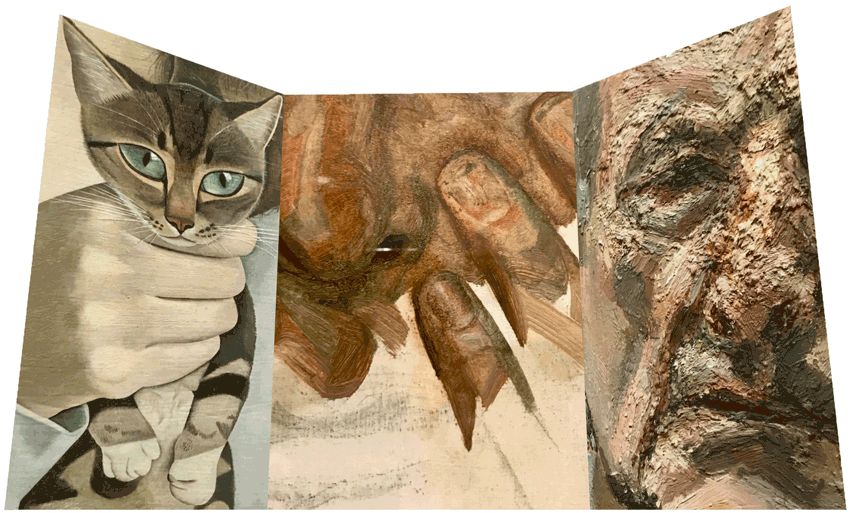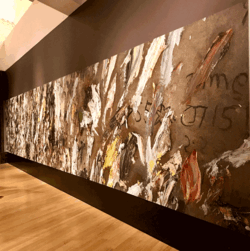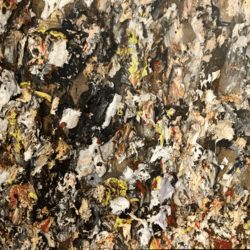January 7, 2023
Notes on Lucien Freud

(Collage: Lucien Freud early, middle and late styles.)
- Gazing at his early paintings (circa 1947), other artists float to my mind: Ben Shawn in the eyes and faces, Andrew Wyeth in the hair of 'Girl with a Kitten', Georgia O'Keffe in the bottom left corner of 'Girl with Roses', when I see his treatment of hair I think of Art Deco. At that time in his life, it was all about the edges.
- Lucian Freud's early oil painting resembles tempera or gouache. Very thinned out. Dry. Lots of solvent, his studio must have been fragrant.
- At what year did he go thick, fleshy? There was a transition from illustration to "fine art".
- Lucian Freud painted thick fleshed faces, paint moved fat and hard with big brushes, quick attacks spending material fast. Reminds me of the faces of early Cezanne and Van Gogh's "Potato Eaters".
- The power of the portraitist: such a painter has an advantage of anchoring fast into social circles. Abstract painters have no such advantage. People like having their portraits done. If they are paying for them, they expect a likeness. If they are not paying for them, if a "known artist" asks for a sitting, people are usually thankful to be memorialized into art history. Social circles can expand, social power is communicative. Embedment. Art-qua-art sneaks in the wake of who-knows-who.
- More power: of the artist over the subject. Nudes spreading legs, the secret face revealed. Divulgement. Submission, both model to artist and artist to model? Caché of the dare. Truth or Dare.
- Impasto to render flesh, of wet over dry via multiple layers and iterations. Encrustations. Obsession, compulsion? He followed the highlights on the topography of flesh as in a racecourse, over and over agin, round and round... a slow race it was since a portrait could cost around forty sittings over six months. Multiple passes conjuring flesh. Rembrandt. With each sitting, Freud's activity must necessarily be confined to a narrow action of the highlights. What had changed session after session? Freud controlled the pose with chalk marks where the chair legs touched the floor, the record of the previous session, the time of the encounters. As he caked paint over and over over nose, cheek and brow, what changes did he record? Psychological changes? No, that layup is way too easy.nWhat was it, then?
- Evenness of tonality in Freud's oeuvre: the result of the famous London (blueish-grey) sky?
- Facial caricature falls off in later years... or does the portrayed self change? (Quoting myself: "every portrait is a self portrait.") The whole body too, is a portrait, equal to and as informative as a face.
- Note regarding the last photo mural on the bookstore wall, snapped from Freud's studio wherein he scraped off his palette and slathered the meaty leftovers of paint onto the wall. This happened at the end of the session, when he and his subject deployed for dinner. Leftovers before dinner! A celebration? A kind of clock, marker of time. Accretion. Tree rings. Lucian Freud's only abstract painting? Fire and forget. Remember, he deliberately left it there. A testament of something specific? Better, in my opinion, than the abstraction that he represented in the background of 'Self-portrait (Reflection)', 2002. Posted by Dennis at January 7, 2023 2:02 PM



Leave a comment